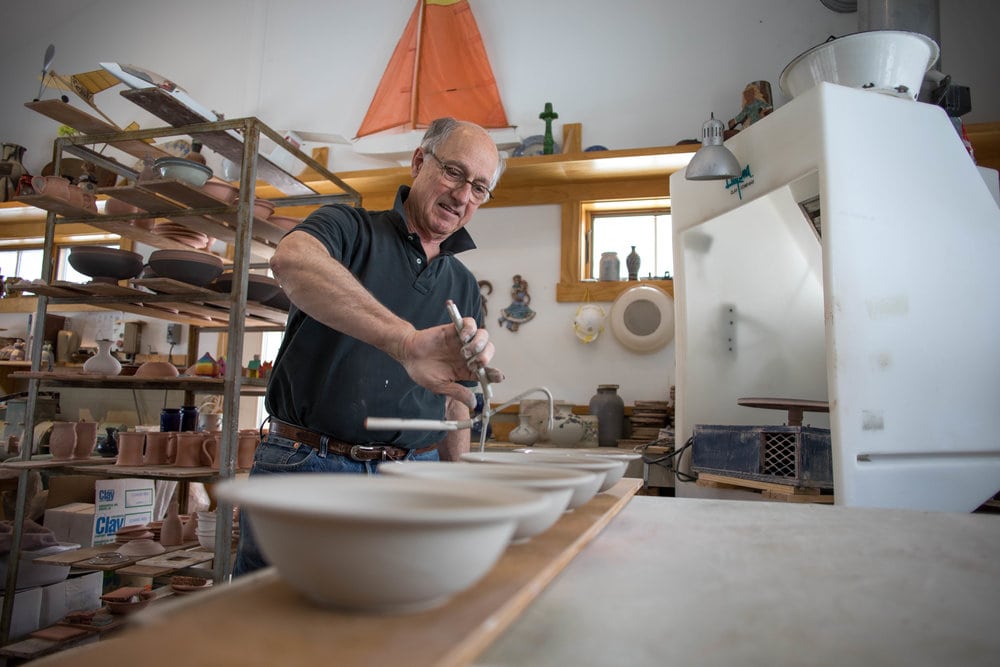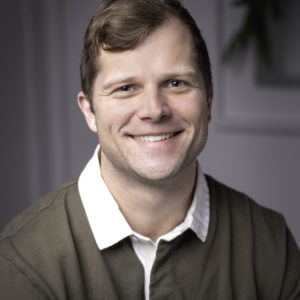The best content marketing doesn’t feel like it’s trying to sell you something. It’s creative and artful — and it exists far outside the confines of the content industrial complex.
Consistently creating that kind of powerful, original content isn’t easy. Skill Scout CEO Elena Valentine and her team have done just that with Humans@Work, a documentary series that expands upon Skill Scout’s core service of workplace filmmaking with powerful short documentaries that explore meaningful ways the personal and professional can intersect.
Elena will be joining us for Managing Editor Live 2020 for a screening of “Portrait of a Potter,” which profiles Deneen Pottery, a family-run business based in St. Paul, Minn. After the film, I’ll lead a Q&A with Elena to learn more about what goes into a project like this and the things the team learned in the process.
As a preview of that conversation, I spoke with Elena about what inspired the project.
Why Did Skill Scout Create Humans@Work?
We wanted to create an outlet for our vision and aspirations of where we wanted to take workplace filmmaking. Our clients enable us to do some level of experimentation and prototyping, but if we’re really trying to change the game in terms of the framing of how we tell stories in the workplace, we knew that it had to be different.
Two specific things inspired us. The first is something I heard Denise Young Smith, the former head of inclusion at Apple, said at a conference: “There are not enough positive stories in the workplace.”
We know that positive stories have the power to shift bias, counterbalance and inform our brain in new ways. We wanted to spotlight all the positivity that does happen within work and people finding their purpose.
The second was that, as filmmakers, some of the most gratifying moments in our job when we lay witness to the people we’re interviewing. You can just see them light up and glow — people who were meant to be engineers, meant to be doctors, meant to be mechanics, and for them to sometimes be self-reflecting publicly for the first time. It’s really quite an honor. They’re sharing such special moments and reflections with us. It had us thinking just about the meaning of work in general and people’s lives and how we might leverage the power of film to help people get to that.
What’s the Story Behind “Portrait of a Potter”?
The Deneens are special to us because that was one of the first opportunities that we got to explore what Humans@Work means. We were privileged to get a grant from a foundation out of St. Paul who said, “Hey, what you’re doing sounds really cool. If you can find identify some folks in St. Paul, let’s do this.”
First, we wanted to get a sense of what St. Paul was all about. So we talked to locals, and then really thought about the businesses that comprise St. Paul. We looked at companies around the area and honed in on small businesses. We thought about St. Paul’s many cultures, and as we were continuing to do our research, the Deneens and Deneen Pottery emerged as the perfect fit. These are homegrown Minnesotans that started building their business in St. Paul in 1972. They came into this business with a love for pottery and a desire to do great work, not a business plan. As you’ll see in the film, that had its ups and downs, but there is something very pure and very authentic about their story, about why they started their business, and about having a family-run business and what that means.
They’ve also been very intentional about the workplace culture they’ve been building since the ‘70s. The Hmong community of St. Paul has been core to this culture. And it says a lot when you have two to three generations of Hmong families that work there. So when we saw all of that combined, we knew that Deneen Pottery was something special.
How Have You and Your Team Carried These Experiences Into Your Client Projects?
It was essential for us to see the subject holistically. People’s jobs are certainly the primary aspect of the film, but how does their craft inform their home life and how they navigate the rest of their time? When you have someone that is passionate and finds their work so meaningful, you’re going to see that in other aspects of their lives. That was definitely one thing we were able to create in a more scalable way with our clients.
The other thing was experimenting with more long-form content. As much as Millenials are critiqued as being the generation with the lowest attention span, I think we have to acknowledge that much of the content we’re asked to pay attention to is shit. If you provide something really meaningful, emotional and authentic, then the length doesn’t matter. Good content is good content. And that’s somewhere we want to push the envelope.
Why Is It Important for Marketers to Take on Initiatives that Push Their Content Creatively?
Of course, marketers are there to build the business brand, but our businesses are built with people — and people buy from people. Regardless of whether we’re marketing or recruiting, we people’s stories are what matter. And it’s finding the humanity in these other people that activate us or inspire us to want to work with this company or buy from this brand. Maybe the CEO is someone who you resonate with. Or the employees are someone that you can connect to.
Humans@Work has taught us is that it’s people first, company second. And Delta or Nike or whoever it is are merely environments or backgrounds to who this person is.
Which Brands’ Creative Work Do You Admire?
Some brands that are out there doing it extremely well, particularly outdoor brands. For me, Yeti, bar none, has some of the most inspiring content. For example, I’d never think to find resonance in a story about a hunter-photographer, which Yeti did with “Chasing Light.” It’s a profile of Wyman Meinzer, who’s the official state photographer of Texas. You’ll see a Yeti cooler behind him, but it’s never about Yeti. And I think that’s what’s so beautiful — they can carefully place their Yeti coolers because this is already a Yeti customer. But inevitably, this is the story of this award-winning hunter-photographer. And because you resonate with this story, it’s like, “Oh, Wyman likes Yeti? Dope. I’m in. I want a cooler when I’m doing my own photography out in the wilderness.”
Yeti knows they’re not after the broader market. They’re not going to be the brand that everyone buys. They’re going to be for your anglers, your sea fisherman, whatever it is. So they recognize that, and they build their brand on people who are just doing dope shit outdoors.
Miss the conference? You can still watch the session here!






